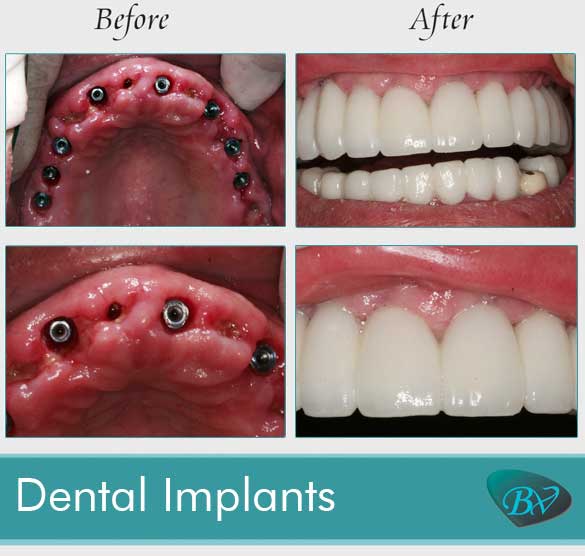Things about Dental Sense
Things about Dental Sense
Blog Article
Excitement About Dental Sense
Table of ContentsExamine This Report on Dental SenseUnknown Facts About Dental SenseThe Main Principles Of Dental Sense Dental Sense - An Overview
are clinical gadgets operatively dental implanted into the jaw to bring back a person's capacity to chew or their appearance. They offer support for fabricated (phony) teeth, such as crowns, bridges, or dentures. When a tooth is shed because of injury or disease, a person can experience problems such as fast bone loss, faulty speech, or modifications to chewing patterns that lead to discomfort.Oral dental implant systems contain an oral implant body and oral implant abutment and may also include an abutment addiction screw. Root canal procedure. The dental implant body is operatively placed in the jawbone instead of the tooth's root. The dental implant joint is usually connected to the implant body by the joint fixation screw and expands with periodontals into the mouth to sustain the affixed man-made teeth
(https://experiment.com/users/dentalsense1)Structure of The Dental Implant System choosing dental implants, speak with your dental supplier concerning the prospective benefits and threats, and whether you are a candidate for the procedure. Things to think about: Your total health is a vital aspect in figuring out whether you are a great candidate for dental implants, how long it will require to recover, and how much time the dental implant may remain in place.
Smoking might influence the recovery process and decrease the long-term success of the dental implant. The recovery procedure for the dental implant body may take a number of months or longer, during which time you usually have a momentary abutment instead of the tooth. the dental implant treatment: Meticulously comply with the dental hygiene instructions provided to you by your dental service provider.
The 9-Minute Rule for Dental Sense
Implant failing can lead to the demand for one more operation to repair or replace the dental implant system. Brings back the ability to chew Restores cosmetic look Aids keep the jawbone from shrinking because of bone loss Preserves the health and wellness of the surrounding bone and periodontals Helps maintain adjacent (close-by) teeth secure Improves high quality of life Damages to surrounding all-natural teeth during implant placement Injury to the surrounding cells throughout surgical treatment, such as sinus opening Injury during surgical procedure (as an example, crack of bordering jawbone) Poor function, such as feeling like the teeth do not attack together generally A feeling that the tooth is loose or turning in position arising from a joint screw loosening up Implant body failing (looseness of the dental implant body) due to systemic infection, which might be extra likely in individuals with unchecked diabetics issues as a result of regional infection in bone and periodontals sustaining the implant body because of postponed healing, which might be most likely in individuals who smoke Difficulty cleansing the gum tissues around the implant, causing bad oral hygiene Unattended periodontal disease Post-surgical pins and needles due to nerve impingement or damage Constantly alert healthcare providers and imaging specialists that you have dental implants before any kind of magnetic vibration imaging (MRI) or x-ray treatments.
FDA is not knowledgeable about any damaging occasions reported for MRI or x-ray treatments with dental implants. Dental implants systems are usually made from materials that follow international consensus standards of the International Organization for Standardization (ISO) or ASTM International. These requirements have details of what makes a safe material.

An oral implant is a framework that replaces a missing tooth. With screw-like gadgets, the specialist inserts a dental implant right into the jawbone, and it acts as an anchor for a man-made tooth, called a crown.
Dental Sense Fundamentals Explained
Some individuals are not eligible for dental implant surgery. It is for dental cosmetic surgeons to operate on people with: acute illnessuncontrollable metabolic diseasebone or soft tissue disease or infectionIf these issues are dealt with, a person can have the surgical treatment. In, dental specialists abstain from running on people with: If people with any one of the above undergo oral implant surgical treatment, there is a higher risk of the dental implant failing.

Oral implant surgical procedure is a tailored procedure. It's not the very same for everyone. The following offers a general introduction of what you can anticipate your dental expert, dental cosmetic surgeon, periodontist or prosthodontist to do: Position the dental implant operatively. Offer you time to heal. Connect the blog post and last crown, bridge or denture.
Next off, your doctor will meticulously position the oral implant into your jaw. If your implant is near the front of your mouth, your dentist will make a short-lived tooth for you to put on up until you heal.
Dental Sense for Dummies
Your service provider can tell you what to anticipate in your situation. During the recovery stage, your jawbone ought to fuse to the oral implant. This process, called osseointegration, is vital for security and long-term success. This process can take anywhere from three to nine months. Sometimes, it might take much longer.
When your dental implant heals, your dental practitioner can connect the joint (small adapter blog post) and your final remediation (crown, bridge or denture). This normally takes regarding one hour to complete and might need a 2nd minor useful site surgical procedure. You shouldn't feel any kind of pain throughout your dental implant procedure because your copyright will use medication to numb your gums.
Report this page